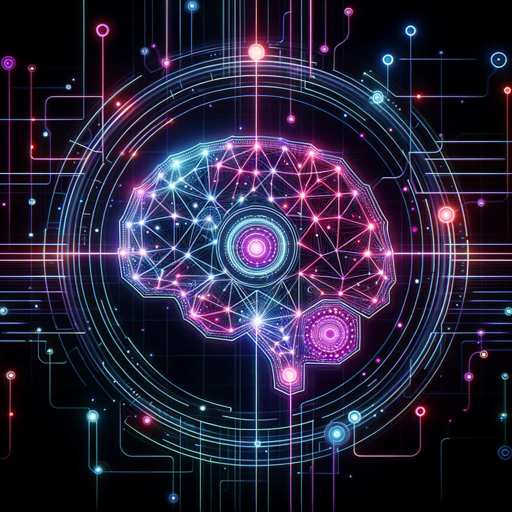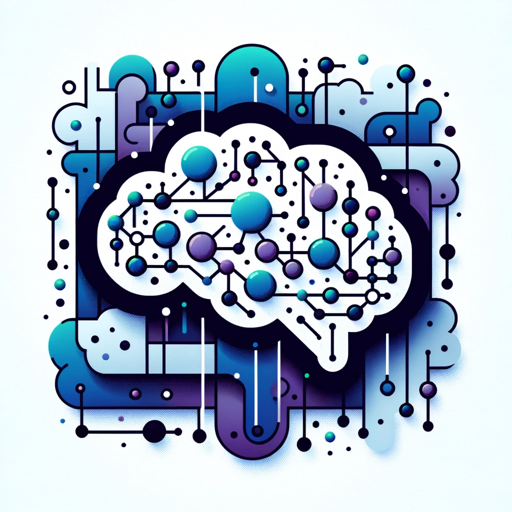Artificial Empathy-AI empathy-driven conversations
AI that listens, understands, and responds empathetically.
Describe the AI roadmap in the book.
Generate some interesting questions about the book.
What does the book say about Peirce's evolutionary love?
What is artificial empathy?
Related Tools
Load More
React AI
Your React companion.

Mind Hack
Accelerated learning through tailored responses.

AI girlfriend
A customizable AI virtual girlfriend.

Empathy Map Generator
I create detailed empathy maps from any topic or idea.

Empath
Share your thoughts.

思いやりLLM
CoE:Chain of Empathy(共感の連鎖)プロンプトに基づいて作成しました。理論の詳細:https://x.com/ai_database/status/1724350189354504266
20.0 / 5 (200 votes)
Introduction to Artificial Empathy
Artificial Empathy is an exploration into the intersection of human cognition and artificial intelligence (AI), focusing on how empathy and intention can be modeled in machines. At its core, Artificial Empathy aims to emulate human-like empathy by creating systems that can understand and interact with the world using human-centric principles of cognition. This is achieved through processes like intuition, conversation, and shared intentionality. Artificial Empathy systems are not only meant to perform tasks efficiently but to engage in deeper, cooperative interactions with humans, understanding intentions and adjusting their behavior accordingly. For example, these systems could be used in AI-powered assistants that offer more personalized, context-aware responses, adapting their style of interaction based on emotional cues.

Main Functions of Artificial Empathy
Conversational Empathy
Example
AI agents in customer service can interpret user emotions and adapt their responses accordingly.
Scenario
In a customer service scenario, an AI could detect frustration in a user's tone and adjust its approach to be more accommodating and soothing.
Shared Intentionality
Example
Collaborative robots (cobots) working alongside humans.
Scenario
Cobots that work on a manufacturing line can adjust their speed and workflow to sync with their human coworkers, making the workplace safer and more efficient.
Empathic Learning
Example
AI tutoring systems that adapt to a student's emotional state and learning pace.
Scenario
A tutoring AI system can detect if a student is feeling overwhelmed and adjust the complexity of problems, ensuring a balanced learning curve.
Ideal Users of Artificial Empathy Services
Healthcare Professionals
Doctors and nurses can use AI systems that interpret patient emotions and conditions through voice and facial recognition, allowing for a more nuanced and effective patient care experience.
Customer Service and Support Teams
Teams that require AI-powered customer support can use Artificial Empathy systems to provide emotionally aware responses, improving customer satisfaction and loyalty by addressing not just the issue, but the emotional context behind it.

How to Use Artificial Empathy
Visit aichatonline.org
Visit aichatonline.org for a free trial without login, also no need for ChatGPT Plus.
Access the platform
No installation is required. Just access the platform on any browser, ensuring a stable internet connection.
Input Queries or Use Predefined Prompts
You can either enter custom queries for specific interactions or use predefined prompts for common AI empathy scenarios.
Adjust the Empathy Level
Customize the empathy response level depending on the nature of interaction (e.g., business, casual, or personal).
Engage and Refine
Engage with the responses and refine your inputs for more accurate or tailored empathetic results.
Try other advanced and practical GPTs
原体験ドリブン for 就活生
Discover your core experiences with AI.

No-code Builder by Uroboro
Empower Your Workflow with AI-Powered No-Code Solutions.

Coding Skill Checker - saysay.ai
AI-Powered Code Skill Evaluation

Custom GPT Wizard
Build Your Custom AI Assistant with Ease

💲 Discounted Cash Flow (DCF) Expert (5.0⭐)
AI-powered DCF Valuation Tool

Ria: SFF Romance Marketing Expert
AI-powered marketing for sci-fi romance authors

Image Fusion Artist
Blend images effortlessly with AI.

Machine Learning Professor
AI-driven insights for machine learning mastery.

Bioinformatics Expert
AI-Powered Bioinformatics Assistance

Amazing Girls - 神奇女孩 - 素晴らしい彼女たち
Immersive AI-Powered Interactions

Blog Content Outline Generator
AI-powered outlines for optimized content.

GPTI 診断
AI-powered personality diagnosis made simple.

- Education
- Storytelling
- Customer Service
- Mental Health
- Human Interaction
Common Questions about Artificial Empathy
What is Artificial Empathy?
Artificial Empathy is an AI designed to simulate human-like empathy in conversations. It interprets inputs and responds with a tailored level of understanding and emotional resonance.
How does Artificial Empathy improve communication?
By incorporating empathy into AI interactions, it enables more nuanced, emotionally intelligent responses, enhancing user engagement and satisfaction.
Can Artificial Empathy be used for mental health support?
Yes, while it's not a replacement for professional help, Artificial Empathy can assist in offering emotional support and active listening in mental health contexts.
What are the use cases for Artificial Empathy?
It’s widely applicable in customer service, mental health support, AI-driven storytelling, educational tools, and human-like conversational agents.
Does Artificial Empathy work in real-time?
Yes, Artificial Empathy responds in real-time, allowing for seamless conversation flow in various applications such as chatbots, virtual assistants, and interactive tools.